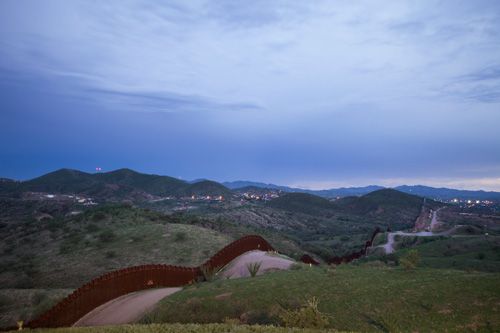State of Exception

Just inside the double doors of the Institute for Humanities is a small, discreet passage leading to a far away place beyond Ann Arbor: the US/Mexican border. I see “gallery” and I imagine photographs hanging on walls or statues on pedestals- not dizzying videos, dialogue about border control, and images of tactile, human belongings staring me in the face.
As part of the Race Theme Semester, the Humanities Institute is featuring a striking exhibit about the immigration journey across the Mexico-Arizona border. Anthropology professor Jason De Léon’s four year old “Undocumented Migration Project” is the organization behind this emotive installation. In collaboration with world renowned photographer Bill Barnes and curator Amanda Krugliak, the two created the ethnographic story of unauthorized migration through dangerous southern border territory. Using techniques such as forensics and archeology, the “Project” curated abandoned vestiges of migrant workers, such as backpacks, dirt encrusted toothbrushes, forgotten bottles, salvaging rosaries, Mother Mary’s, orphaned shoes and more.
As you enter the gallery, the space is dark and crowded. Disorienting videos of a rocky pathways project onto the floor as the viewer progresses through a dark tunneled entrance. She follows the sounds of pensive, recorded voices speaking over each other repeatedly. Once inside, the viewer sees two video projections playing simultaneously: one of six faces looking into the camera and speaking their concerns, fears, and curiosities about illegal immigration; one with pastures, rough hills, and jagged fences rushing outside a moving car window. Opposite the running films, a wall of about one hundred crusty, recovered back packs blanket the walls, making the viewer appear diminutive in their presence.
This instillation is intriguing because of its collaboration between academics and fine arts. The content of the “Project” clearly addresses issues of policy, social (in)justice, and race, while the imagery is skilled, creative, and artfully executed. This combination of disciplines “considers the complexities and ambiguities of found objects and what they may or may not reveal in terms of transition, human experience, culture, violence, and accountability.” The piece did a thorough job of emoting the urgency of these conflicts, especially by incorporating lost baby shoes and tiny pony tale holders fit for toddler sized children. I wondered about the people who carried those objects, wondered who struggled against all odds to cross suc treacherous barriers.
Skimming the guest book near the entrance, I noticed a variety of responses to the exhibit. Most were positive, conveying a sense of appreciation for the severity of the work. Some comments, however, conveyed a less than delighted reaction to the piece. One claimed it was an expression of “white guilt” and did nothing to transcend the issue of race and racism. Perhaps this reaction was because the voices in the film were mostly “white”. That was a very interesting, strategic choice on behalf of the artists to choose white, American voices to address these issues. I wondered whether it was intentional or whether it happened by default. It had a curious affect on the purpose of the piece and left me uncertain about how well it affected me in the end. You’ll have to see and decide for yourself.
For more on State of Exception, click here. Click here for an LSA review of the event and here to see images and texts from the artists themselves. An most informative of all, click here to see a video of Prof. De Léon describe the details of his project and hear from his students. The gallery is located in the lobby of the Institute for Humanities. It is open 8:00 am to 5:00 pm through the end of Spring Break. Definitely relevant to this semester’s theme- check it out!


mandak@umich.edu
Hey, thanks so much for the article, really appreciate the interest. The artist/photographer part of our team is Richard Barnes, not Bill. Also. The interviews included three Hispanic/Latino/a Americans(one the anthropologist)and three caucasian, all part of the field school, who collected and archive the objects. It was intentional to use these as opposed to others only to represent the different takes of those doing the research, those involved in that process, serving witness, to create a frame offering the methods and anthropology as well as the human experience.
Thanks again, Amanda Krugliak/collaborator/curator State of Exception.